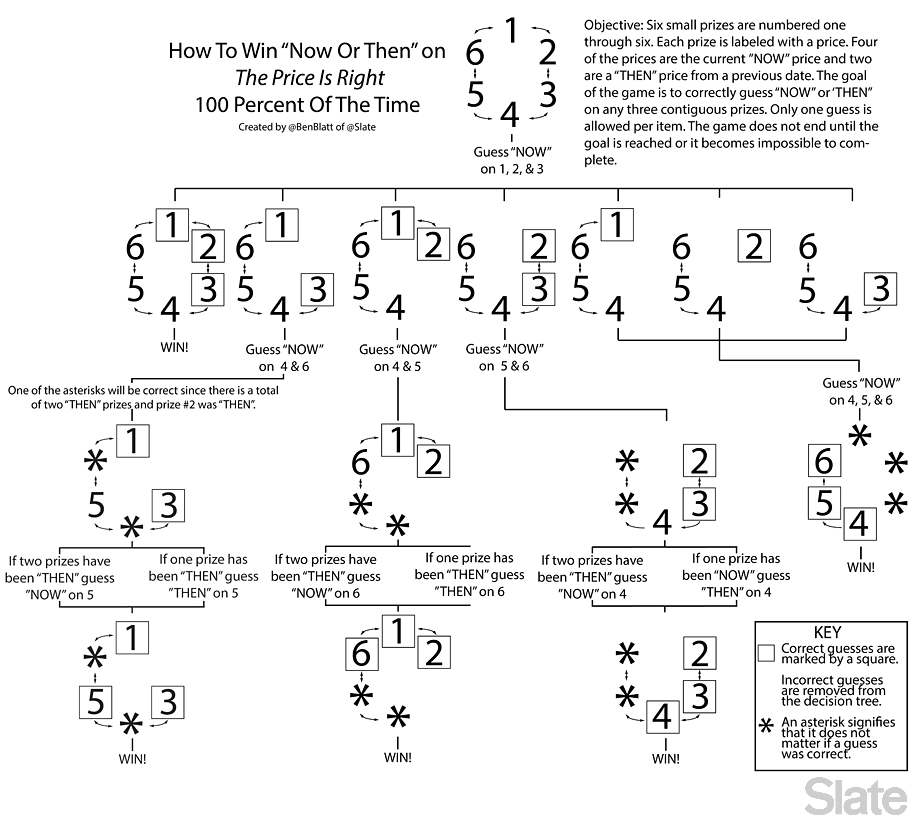- 4 Higher: 0 playings (0%)
- 3 Higher, 1 Lower: 13 playings (9.49%)
- 2 Higher, 2 Lower: 77 playings (56.20%)
- 1 Higher, 3 Lower: 47 playings (34.31%)
- 4 Lower: 0 playings (0%)
Stats for each hole (seasons 40-47)
The way to read the following table is for each hole, the first line is how often it contained $10,000 or more, and the second line is how much money it contained on average. For example, the top left corner reads "0/18"--this means that in 18 punches, it contained $10,000 or more 0 times. The average of all the values that were found in that hole was $1,302. Note this excludes the playing where a dream car was offered.
0/18 0/5 0/11 0/10 0/6 0/7 0/8 0/10 0/5 0/14
$1302 $2200 $1736 $1450 $792 $1121 $1813 $1125 $2350 $1686
1/5 0/8 1/17 1/13 0/12 0/12 0/9 0/20 0/14 0/4
$2900 $1344 $3059 $1308 $583 $588 $1122 $1183 $2264 $563
0/3 0/11 0/9 1/10 0/27 0/14 0/11 2/12 0/9 0/0
$1083 $714 $1889 $1950 $1535 $1682 $1114 $3600 $1667 N/A
0/2 0/11 0/16 0/6 1/8 0/9 0/7 0/9 0/15 1/3
$1375 $632 $916 $767 $4169 $1317 $2571 $761 $1130 $3533
0/6 1/10 0/6 0/3 0/2 0/5 0/4 1/10 0/8 0/11
$625 $1345 $1958 $1867 $175 $3700 $588 $2475 $650 $782
Bold means $10,000 or more was found there at least once.
Strategy
Part 1: Small prize pricing
Know the prices. They don't make this part hard because they want people to punch the board. Do note that it's never been all four prices are higher or all four prices are lower, so if the first three have the same answer, you know the fourth will be the opposite answer.
Part 2: Which holes to punch?
DON'T PUNCH THE CORNERS!! The producers know that people like to punch the corners so they never place the big money there--you can see none of the corners has had the big cash since season 40. (To be fair, the dream car was in the top right corner; I excluded that playing because the car replaced a $100 slip. I don't know if the producers placed all the slips, then replaced a $100 they had put in the top right corner with the car or if they intentionally placed the car in that spot.) Otherwise, it's really a crapshoot. I personally would go for the 4th through 7th spots on the bottom row, because very few people punch those spots. If you want to try something no one else has, punch the far right spot in the middle row--no one has tried that since season 39 at least.
Part 3: Should you continue?
The naive analysis would simply be to look at the average amount on the board, which is $2,260 $2,060 (thanks to TPIRfan#9821 for the correction!), and say that if you have more than that you should stop. So that analysis would state that if you get $2,500 or more, stop, $1,000 or less, and you should continue. I'm going to go a little deeper than that, though. Here's another table...
If you # of picks Probability of all other picks being
have left strictly less than what you have now
$250 1 10.20%
$250 2 0.85%
$250 3 0.054%
$500 1 30.61%
$500 2 8.93%
$500 3 2.47%
$1,000 1 51.02%
$1,000 2 25.51%
$1,000 3 12.48%
$2,500 1 71.43%
$2,500 2 50.60%
$2,500 3 35.52%
$5,000 1 87.76%
$5,000 2 76.79%
$5,000 3 66.98%
$10,000 1 95.92%
$10,000 2 91.92%
$10,000 3 88.01%
Note: this table assumes that the amount you currently have is the one and only punch you've taken so far. It doesn't change things drastically if you remove that assumption.
As you can see, I've highlighted the rows where continuing would mean that you'd lose money more likely than not. Here's that strategy in a simple bullet list:
- If you have $500 or less, continue.
- If you have $1,000, stop if and only if you have exactly 1 pick left.
- If you have $2,500, stop if and only if you have 1 or 2 picks left. If you have 3, continue.
- If you have $5,000 or more, stop. Period. (Yes, I know of the guy in the 1990s who threw away $5,000 when the top prize was $10,000, and then managed to get the $10,000. That's so incredibly unlikely you should not follow suit.)
